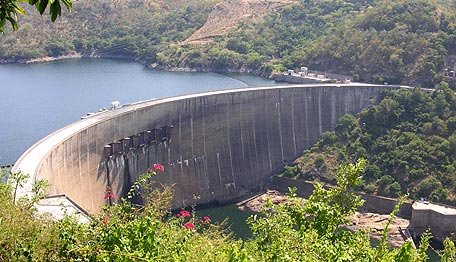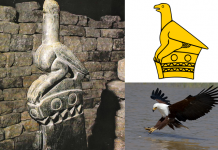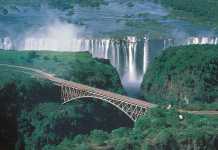By Elizabeth D.T. Taderera
This double curvature concrete arch dam is 128m (420ft) tall and 579m (1900ft) long, forming Lake Kariba which stretches for 280 kilometers and holds up to 185 cubic kilometers of water. It was built in the Kariba Gorge of the Zambezi River basin between Zambia and Zimbabwe. The dam was designed by Coyne et Bellier and the first stage was constructed between 1955 and 1959 by Impressit of Italy. It collapsed in 1956 and 86 people died during its construction; locals believe this was because the River God, Nyami Nyami, was furious at being separated from his goddess. The dam was finally completed in 1977 for a total cost of USD480 million.
The dam supplies electricity to both Zambia (from the north bank) and Zimbabwe (from the south bank). The dam project was planned by the government of the Federation of Rhodesia and Nyasaland (Central African Federation) which was a semi-independent state within the commonwealth in southern Africa (1953-1963). Today the Kariba dam is owned and operated by the Zambezi River Authority and is jointly owned by Zimbabwe and Zambia.
The construction of this dam caused displacement and forced resettlement of almost 57000 Tonga people who settled along the Zambezi on both sides of the dam. Gardens were planted to try and teach the Tonga different methods of agriculture but these were not completely successful. Some of the people displaced by the dam have continued to struggle to this day. The dam now controls almost 90% of the total run off of the Zambezi River, significantly changing the downstream ecology. During the building of the dam, Operation Noah captured and rescued about 6000 large animals and numerous small ones that were threatened by the lake’s rising waters.
The Zambezi River and the Kariba area is known for its vast source of fish including kapenta and bream and these are sold across Zimbabwe.

























